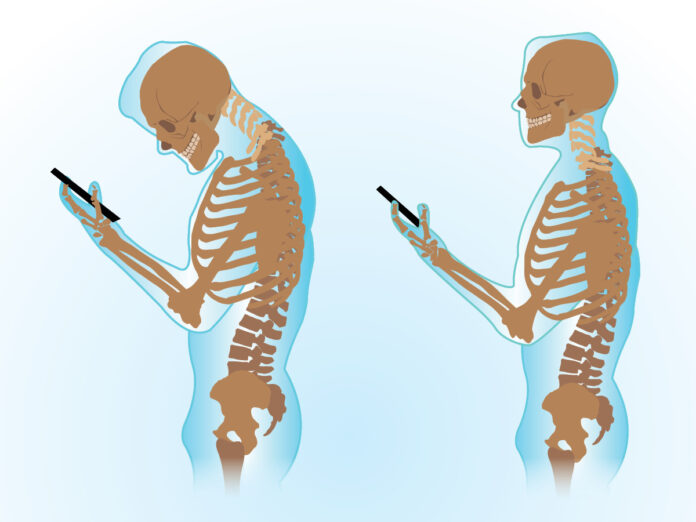
Almost all aches and pains are from an accumulation of repeated stressors to the body as opposed to a one-time incident.
One particular area for this repetitive stress problem is the neck, and it’s becoming a really big issue for adults and kids.
Why the Neck?
The neck creates a perfect storm between the weight of the head and the number of things we do that involve looking down. Consider how much of your life you spend looking down – reading, cooking, washing dishes, and even exercising. It’s especially common when using electronic devices such as smartphones and tablets.
The Impact
The head of an average adult weights around 10 – 12 pounds in a neutral position. According to a study by Kenneth Hansraj in Surgical Technology International, as the head tilts forward, the forces that the head places on the neck increase significantly to 27 pounds at 15 degrees, 40 pounds at 30 degrees, 49 pounds at 45 degrees and 60 pounds at 60 degrees.
Therefore the common texting position can increase the weight of the head by five times. This means that looking down at a cell phone can be equal to placing a 60-pound weight on your neck.
Bending the neck and looking down places excessive stress on the muscles, ligaments, joints and discs of the neck, which can create little, repeated insults every day. These small insults can add up and lead to excessive breakdown over time.
Conditions of the neck can create many undesired symptoms: muscle pain, headaches, brain fog, cognition decline, excessive fatigue, and even digestive issues.
The Solution
The answer is two-fold: stop over-stressing the neck and speed up recovery and healing.
To limit the stressors and avoid repeated insults to the neck, stop looking down whenever possible. It’s not possible to avoid looking down completely, but you can control how much you bend your neck and how often and how long you look down. This can alleviate the degree of the daily stressors and maintain the health of your neck in a sustainable place.
To speed recovery, treatment like chiropractic, massage and acupuncture can help greatly. Moreover, self-massage by foam rolling is an excellent strategy because you can do it daily. And healthy muscle can best support and stabilize the rest of the neck.
Just remember, don’t look down!
Stress Levels
As the angle of your head and neck increases, the force on your neck also increases.
Angle / Force
- 0 degrees / 10 – 12 pounds
- 15 degrees / 27 pounds
- 30 degrees / 40 pounds
- 45 degrees / 49 pounds
- 60 degrees / 60 pounds













